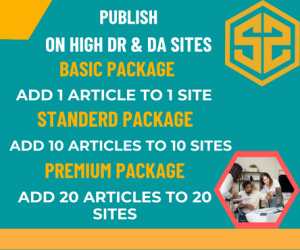In the competitive legal landscape, having a well-designed website is essential for attorneys looking to attract and retain clients. Your website serves as the digital storefront for your practice, and its usability can significantly influence potential clients’ first impressions. An easy-to-navigate website not only enhances user experience but also improves your search engine rankings. Here are some essential tips to ensure your attorney website is user-friendly and easy to navigate. Visit now Attorney Website Design
1. Simplify Your Menu Structure
The navigation menu is the backbone of your website. A clear and concise menu helps visitors find the information they need quickly. Here are some tips for creating an effective menu:
- Limit Menu Items: Aim for five to seven main menu items. Too many options can overwhelm visitors and make it difficult for them to find what they are looking for.
- Use Descriptive Labels: Use clear and descriptive labels for each menu item. Instead of generic terms like “Services,” consider using “Practice Areas” to specify what you offer.
- Organize Subcategories: If you have multiple practice areas, consider using dropdown menus to categorize them. This keeps your main menu clean while still providing access to detailed information.
2. Implement a Search Function
A search bar can be a valuable addition to your website, especially if you have a lot of content. It allows users to quickly find specific information without having to navigate through multiple pages. Ensure the search function is prominently placed, ideally at the top of the page, and is easy to use. A well-functioning search feature can significantly enhance user experience.
3. Optimize for Mobile Devices
With an increasing number of users accessing websites via smartphones and tablets, it’s essential to ensure your attorney website is mobile-friendly. A responsive design automatically adjusts to different screen sizes, providing a seamless experience for users. Test your website on various devices to ensure that all elements are easily accessible and functional. A mobile-optimized site not only improves user experience but also boosts your search engine rankings.
4. Use Clear Calls to Action (CTAs)
Effective CTAs guide visitors toward the next steps you want them to take, whether it’s scheduling a consultation, signing up for a newsletter, or calling your office. Make your CTAs clear and compelling. Use contrasting colors to make them stand out, and place them strategically throughout your website, especially on high-traffic pages. For example, a prominent “Contact Us” button can encourage potential clients to reach out.
5. Prioritize Load Speed
A slow-loading website can frustrate users and lead to high bounce rates. To improve load speed, consider the following:
- Optimize Images: Compress images to reduce their file size without sacrificing quality. Large images can significantly slow down your site.
- Minimize HTTP Requests: Limit the number of elements on each page to reduce the number of requests made to the server. This can include combining CSS and JavaScript files.
- Use a Content Delivery Network (CDN): A CDN can help distribute your website’s content across multiple servers, improving load times for users in different locations.
6. Create a Logical Page Hierarchy
Organizing your content in a logical hierarchy makes it easier for users to navigate your site. Use headings and subheadings to break up text and guide readers through your content. A well-structured layout not only enhances readability but also helps search engines understand your site better. Consider using a consistent format for headings to create a cohesive look throughout your site.
7. Include a Sitemap
A sitemap is a helpful tool for both users and search engines. It provides a visual representation of your website’s structure, making it easier for visitors to find what they’re looking for. Additionally, submitting a sitemap to search engines can improve your site’s indexing, helping you rank higher in search results. Make sure your sitemap is easily accessible, typically linked in the footer of your website.
8. Use Breadcrumbs
Breadcrumbs are a secondary navigation system that shows users their current location within your website’s hierarchy. They provide context and allow users to easily backtrack to previous pages. This feature is particularly useful for larger websites with multiple layers of content. Implementing breadcrumbs can enhance user experience and reduce frustration when navigating your site.
9. Test Your Website Regularly
Regular testing is essential to ensure your website remains user-friendly. Conduct usability tests with real users to gather feedback on navigation and overall experience. Pay attention to any areas where users struggle and make necessary adjustments. Additionally, keep an eye on analytics to identify pages with high bounce rates or low engagement. Tools like Google Analytics can provide valuable insights into user behavior.
10. Keep Content Updated
An outdated website can deter potential clients and harm your credibility. Regularly update your content to ensure it remains relevant and accurate. This includes blog posts, practice area descriptions, and contact information. Fresh content not only keeps users engaged but also signals to search engines that your site is active. Consider adding a blog section where you can share insights, legal updates, and tips that may interest your audience. This not only helps with SEO but also positions you as an authority in your field.
Conclusion
Creating an easy-to-navigate attorney website is essential for attracting and retaining clients. By simplifying your menu structure, optimizing for mobile devices, and regularly testing your site, you can enhance user experience and improve your online presence. Remember, a well-organized website not only serves your clients better but also reflects the professionalism of your practice. Invest the time and effort into making your website user-friendly, and you’ll likely see the benefits in client engagement and satisfaction.

